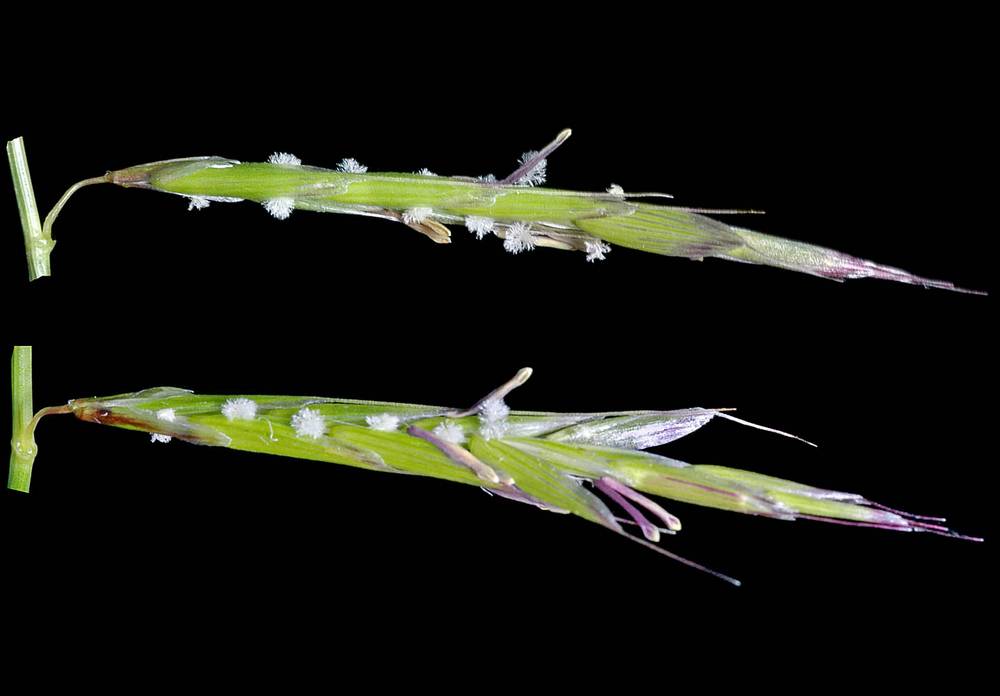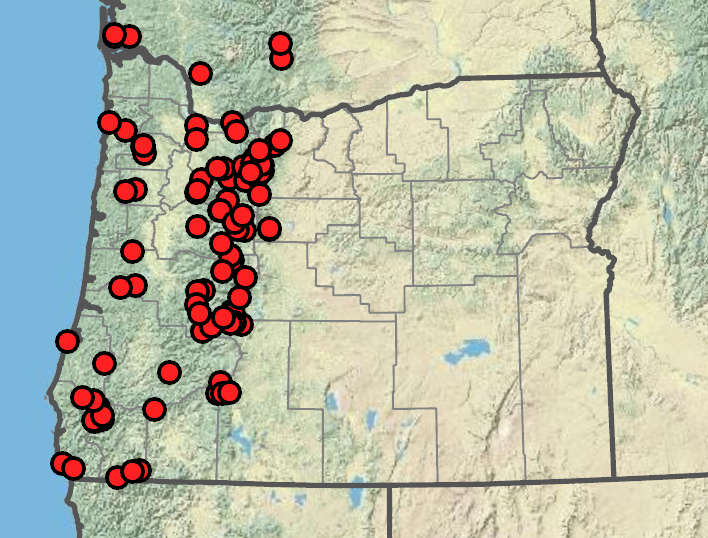Pleuropogon hooverianus
Pleuropogon refractus
nodding semaphoregrass
sheaths glabrous or pubescent;
blades flat, 10–40 cm × 5–14 mm, glabrous;
tips acute or acuminate and with a short point, rarely awned to 0.3 mm; uppermost culm blades often absent or reduced, 0–0.6(1) cm and shorter than the associated ligule, sometimes normally developed and up to 7(17)cm.
racemes (10)20–35 cm × 12–33 mm, 6–14 spikelets reflexed and dangling at maturity.
(20)25–28 mm, 7–14 florets, usually all but the terminal floret bisexual.
linear to ovate, often scabrous; apexes obtuse, sometimes notched;
lower glumes 3–6 mm;
upper glumes 4–7(8.3)mm.
3.5–4.5 mm.
8–10 mm, 7(9)-veined;
tips truncate, sometimes toothed; awns 2–15(21)mm.
keels with a triangular appendage 0.2–1 mm.
3.5–4 mm.
=32, 36.
Pleuropogon hooverianus
Pleuropogon refractus
Wet meadows, streamsides, moist shaded woods. 50– 1700 m. Casc, CR, Est, Sisk. CA, WA; north to British Columbia. Native.
Pleuropogon refractus is an uncommon wetland grass with long, distant spikelets that hang down at an angle. The palea keels have triangular appendages, and the uppermost leaf blades are so reduced that they may be shorter than the ligule.
Barbara Wilson, Richard Brainerd, Nick Otting
- Local floras:
BC,
CA,
OR,
WA
- Local Web sites:
CalFlora,
CalPhotos,
Flora NW,
PNW Herbaria
WildflowerSearch
iNaturalist (observations)
USDA Plants Database
- LBJ Wildflower Center
- SEINet
- Plants of the World Online
- Encyclopedia of Life
- Wikipedia
- Google Image Search



